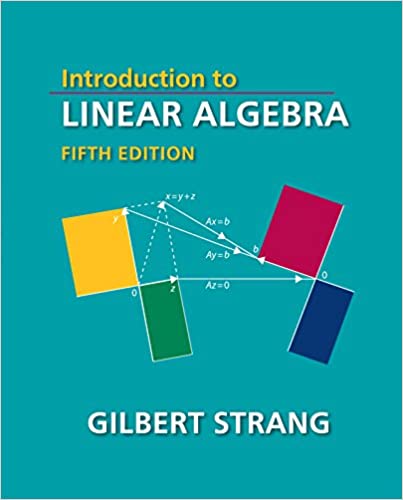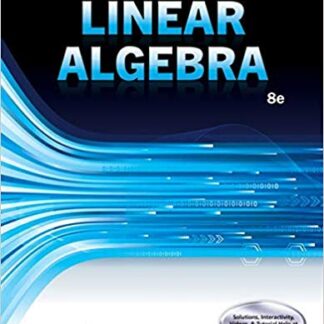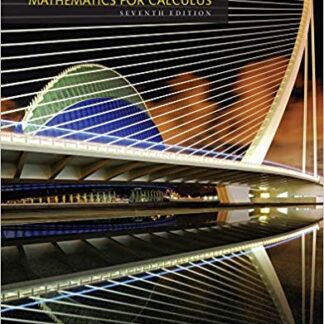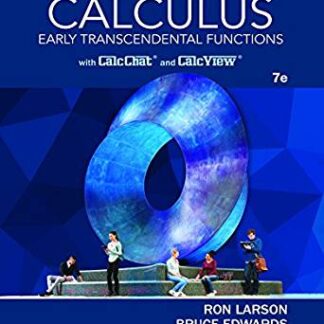Description
Introduction to Linear Algebra 5th Edition by Gilbert Strang, ISBN-13: 978-0980232776
[PDF eBook eTextbook]
- Publisher: Wellesley-Cambridge Press; 5th edition (May 1, 2016)
- Language: English
- 600 pages (LARGE FILE: 60 MB)
- ISBN-10: 0980232775
- ISBN-13: 978-0980232776
Visit here Introduction To Linear Algebra 6th Edition by Gilbert Strang: https://ebookscheaper.com/product/introduction-to-linear-algebra-6th-edition-by-gilbert-strang-isbn-13-978-1733146678/
The fifth edition of this hugely successful textbook retains all the qualities of earlier editions while also seeing many minor improvements and major additions.
Linear algebra is something all mathematics undergraduates and many other students, in subjects ranging from engineering to economics, have to learn. The fifth edition of this hugely successful textbook retains all the qualities of earlier editions, while at the same time seeing numerous minor improvements and major additions. The latter include: • A new chapter on singular values and singular vectors, including ways to analyze a matrix of data • A revised chapter on computing in linear algebra, with professional-level algorithms and code that can be downloaded for a variety of languages • A new section on linear algebra and cryptography • A new chapter on linear algebra in probability and statistics. A dedicated and active website also offers solutions to exercises as well as new exercises from many different sources (including practice problems, exams, and development of textbook examples), plus codes in MATLAB®, Julia, and Python.
Strang’s experience at writing and teaching linear algebra is apparent in the layout of the typeset. Offset in blue type are topic-specific headings that indicate what is contained in the content of the text to follow. For example, on page 5, after developing material on linear combinations of vectors, we find the heading “The Important Questions.” On page 149, after studying the null space, there is a subsection with the heading “Elimination: The Big Picture.” Each section contains the headings “Review of the Key Ideas,” “Worked Examples,” “Problems,” and “Challenge Problems.” These sections are essential reading for the instructor, not just the student. The Worked Examples include material such as the Gershgorin Circle Theorem, while the Problems and Challenge Problems offer the student a chance to master basic ideas and to think much more mathematically about the concepts under study. For example, Problem 29 of Chapter 6 asks for the computation of the eigenvalues of three matrices (not just generic matrices, but matrices with structure and, thus, a chance to learn something about how the features of the matrix influence the eigenvalues), while Problem 39 of the same chapter asks for the possible values of the determinants, traces, and eigenvalues of the six 3 X 3permutation matrices. There is nothing here that can be said to be dry,uninteresting, or irrelevant; rarely does an undergraduate mathematics text feel so alive as this one.
Gilbert Strang is a professor of mathematics at the Massachusetts Institute of Technology, where his research focuses on analysis, linear algebra and PDEs. He is the author of many textbooks and his service to the mathematics community is extensive. He has spent time both as President of SIAM and as Chair of the Joint Policy Board for Mathematics, and has been a member of various other committees and boards. He has received several awards for his research and teaching, including the Chauvenet Prize (1976), the Award for Distinguished Service (SIAM, 2003), the Graduate School Teaching Award (Massachusetts Institute of Technology, 2003) and the Von Neumann Prize Medal (US Association for Computational Mechanics, 2005), among others. He is a Member of the National Academy of Sciences, a Fellow of the American Academy of Arts and Sciences, and an Honorary Fellow of Balliol College, Oxford.
What makes us different?
• Instant Download
• Always Competitive Pricing
• 100% Privacy
• FREE Sample Available
• 24-7 LIVE Customer Support




